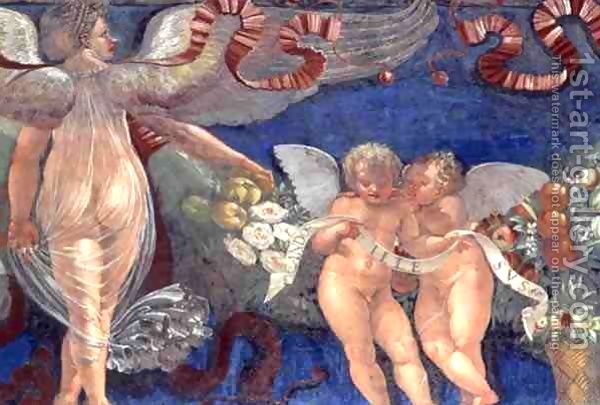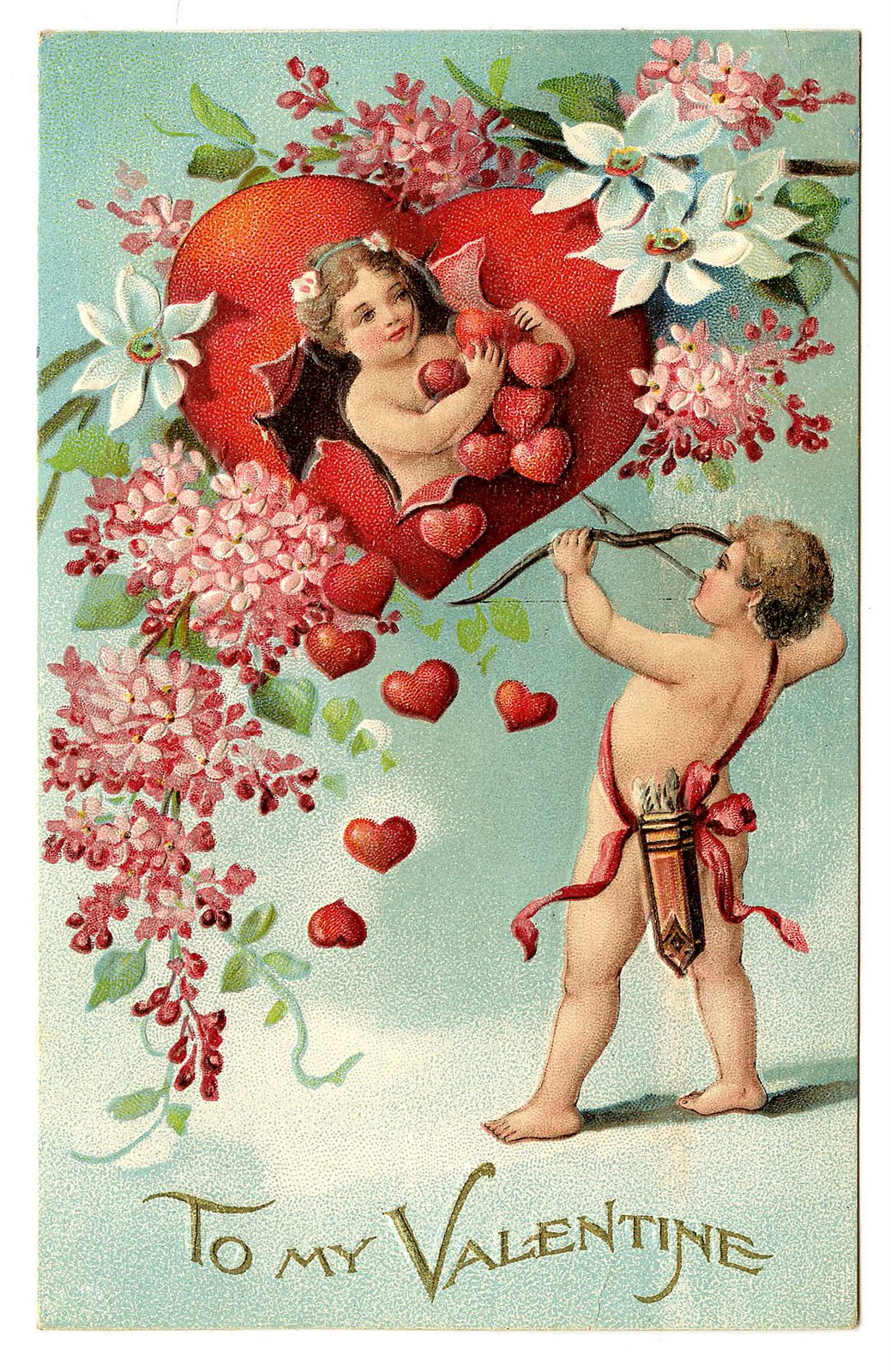
By Noah Charney
We tend to think of Valentine’s Day as a “Hallmark holiday:†an excuse to sell flowers, chocolates, and cards depicting cartoon birds, hearts, and teddy bears. To ask someone if they will be your “valentine†has evolved (or perhaps devolved) into a shorthand for a child-like crush—you might as well ask someone to be your “sweetie.â€Â We have lost track of the fact that Valentine is a man’s name, a saint in fact, and February 14 is his feast day. But Saint Valentinus, or Valentine, has nothing to do with love. Is the modern incarnation of Valentine’s Day a mercantile invention? Is it the equivalent of an American Christmas, which brings to mind Santa Claus, reindeer, Christmas trees, presents, and eggnog long before most folks would mention the birth of Christ?
Yes and no. While greeting card companies have certainly made a meal of the Valentine’s Day tradition, it is not their invention. People have been sending “valentines†for centuries, and the man responsible for associating the name day of Saint Valentine with romantic love is none other than the renowned medieval English poet, Geoffrey Chaucer.
That the feast day of Saint Valentine in the Catholic calendar should have come to be associated with playful love is both surprising and somewhat dark. To begin with, no one is certain which historical Valentinus is the saint in question. Valentinus was not an uncommon name in the ancient Roman Empire: it derives from valens, meaning strong or worthy (from which the English word “value†descends). Much as the Aramaic equivalents of Jesus, James, and John were as common in first-century Israel as Mike, Chris, and John are today, there were plenty of Christians by the name of Valentinus being martyred in the first centuries AD. Fourteen recorded martyrs, all named Valentinus, were executed during this time for their Christian beliefs. One was a priest in Rome, while another was the Bishop of Interamna (the modern Italian city of Terni). Of those fourteen martyrs, the one most frequently associated with the feast of Saint Valentine is one who was born on April 16 (the year is not known), and who was martyred on February 14, buried on Rome’s Via Flaminia. But no one named Valentinus was included in the list of Roman martyrs compiled in 354 AD, and the feast day of Saint Valentinus was first established by Pope Gelasius I, in 496. Since even the Church uncertain as to which Valentinus was sanctified (some think that the original feast day might have even celebrated multiple martyrs of the same name), the feast day was not retained when the Catholic calendar of saints was updated and revised in 1969. In Church terms, there is no longer a “Valentine’s Day.â€Â It is officially now secular. The dates of the original feast day are also uncertain. The Eastern Orthodox Church celebrates the feast day of Saint Valentine the Presbyter on July 6. Another chance for Hallmark to double their sales.
The first known image of Saint Valentine did not appear until 1493, in the famous Nuremberg Chronicle, which includes a woodcut print (possibly by the young Albrecht Dürer) and text stating that Valentine was a Roman priest martyred during the reign of Emperor Claudius II, after having been arrested for marrying Christian couples during one of the periods when Christianity was outlawed. The lives of saints are often most notable for the creative manners in which they were killed, but Valentine was martyred in a more traditionally gruesome manner. He was clubbed and stoned, but when he miraculously survived this first onslaught, he was beheaded at the Flaminian Gate in Rome. The first group biography of the saints, The Golden Legend written in 1260 by Jacobus de Voragine, indicates that the execution took place in the year 280.
With a mysterious saint of uncertain origin who met a grisly death, how did a holiday associated with romantic love arise? Perhaps the story that Valentinus was killed for performing Christian marriage ceremonies has something to do with it? In fact, the association with Saint Valentine turns out to be arbitrary. It is February 14 as a date, regardless of the saint’s feast day, that became a day for love, and it was all thanks to Chaucer.
The author of Canterbury Tales wrote a poem in 1382 entitled “Parliament of Fowles,†about the day when birds choose their mates. In the poem, an embodiment of Nature speaks to the birds:
“Birds, take heed of what I say; and for your welfare and to further your needs I will hasten as fast as I can speak. You well know how on Saint Valentine’s Day, by my statute and through my ordinance, you come to choose your mates, as I prick you with sweet pain, and then fly on your way.â€
The popularity of Chaucer’s poem, which likely stems from a pre-existing general belief, at least in medieval England, that February 14 is the day when birds choose their mates, is what truly cemented the idea that Valentine’s Day is a celebration of romantic love. This belief may have been recorded in medieval bestiaries, popular early books that compiled stories about animals, mythical and otherwise. Never mind that not all birds mate for life. Penguins do, as do geese and falcons. But ducks, for instance, do not—yet the Mandarin Duck is a Chinese symbol for fidelity.

The first known Valentine Card, and reference to someone as a “valentine,†date to only a century after Chaucer’s popular poem. On 14 February 1477, an English woman named Margery Brews wrote to her love, John Paston of Norfolk:
“Right reverent and worshipful and my right well-beloved valentine, I recommend me unto you full heartedly, desiring to hear of your welfare, which I beseech Almighty God long for to preserve unto his pleasure and your heart’s desire.â€
Renaissance images of amorini (little love gods) or cherubic putti were also shaped by Classical images of Eros figures and contributed to the gorwing tradition. Of course, much of the Classical tradition of a winged Cupid or Eros – as seen above in the Romantic Era Cupid sculpture in the Louvre by Antoine-Denis Chaudet –  a prankster often shooting love arrows into unsuspecting humans has also been absorbed into modern Valentine’s Day imagery.
At the British Postal Museum, the first known heart-shaped card is preserved, a sheet of paper from 1790 that folds, origami-like, to literally break apart the painted heart-shaped exterior. Outside, the card reads: “My dear the Heart which you behold/Will break when you the same unfold/Even so my heart with lovesick pain/Sore wounded is and breaks in twain.â€Â When the heart is “broken†open, one more line of text lies inside: “My dearest dear and blest divine/I’ve pictured here thy heart and mine.† These antique valentines, from 1477 and 1790, do not sound so far removed from modern-day Hallmark cards.

The general heart-shape that we now associate with love and Valentine’s Day, which does not look much like a real human heart, may be found in Renaissance art, including Donatello’s relief sculpture, Miracle of the Miser’s Heart (1447-50), as Oxford professor Martin Kemp notes in his recent book Christ to Coke: How Image Becomes Icon. A Catholic cult developed around the Sacred Heart around the Counter-Reformation. A burning heart came to be associated with Catholic mysticism and the supernatural phenomenon of “incendium amoris,†the fire of love, in which a worshipper has an out-of-body experience (ex stasis, from which comes the term “ecstasyâ€) and literally becomes burning hot with spiritual love for God.
While variations on the heart image have been around for centuries, it was not until 1977 that the cartoon heart image was codified by designer Milton Glaser, as part of the “I (Heart) NY†campaign, wherein the heart-shape acts as a rebus, an image standing in for a word or idea.
So this Valentine’s Day, while browsing the Hallmark aisle or making a heart-shaped valentine out of red construction paper, it is more proper that you think back on Geoffrey Chaucer, rather than the mysterious saint or saints who leant their name to February 14.
*******************************************
Noah Charney is a best-selling author and professor of art history. His latest book is Stealing the Mystic Lamb: the True Story of the World’s Most Coveted Masterpiece.